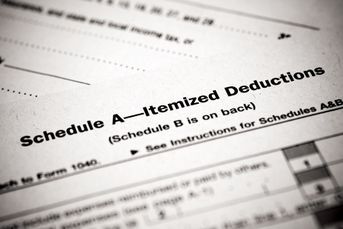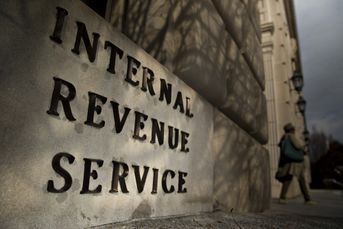Taxpayers only hurting themselves by not mentioning their nondeductible IRA contributions
There's only one way to ensure they get the full tax benefit of those contributions.
By now nearly all taxpayers have begun the arduous task of compiling the information needed to prepare their 2016 tax return, including sifting through receipts and statements to determine what’s needed for the return and what is just noise. That’s especially true for those who hire a CPA to prepare their tax return — they don’t want to pay to have them spend their time going through useless information. In those cases, clients may be tempted to not include things they think won’t impact their return, like, for example, the IRA contribution they know they can’t deduct because their income is too high to qualify.
(More: Tax reform could be ‘way worse’ for retirement industry than Department of Labor’s fiduciary rule)
In the case of those IRA contributions, at least, that would be a big mistake.
THE IRS NEEDS TO KNOW
First, let’s quickly review the rules on deducting IRA contributions. Taxpayers who aren’t covered by an employer retirement plan can always deduct their contribution, but those who are covered are subject to an income limit. For 2016, married couples with modified adjusted gross income over $98,000 (and singles over $61,000) begin to lose the ability to deduct their contribution.
If there’s no immediate tax benefit for contribution, why make it? Because at least the growth on that amount can be sheltered inside the IRA until it’s withdrawn. Plus, those who don’t have any other money in traditional IRAs can take advantage of the backdoor Roth conversion strategy. In fact, that strategy is based primarily on the nondeductible traditional IRA contribution, so those contributions are becoming more commonplace.
While the growth on those contributions is taxable when withdrawn, the contribution itself is withdrawn tax-free, albeit on a pro rata basis with any pre-tax funds in the IRA. And therein lies the reason why clients need to tell their tax preparer about these contributions: How does the IRS know that there really is after-tax money inside the IRA?
(More: Faltering congressional support for auto-IRAs leaves legislation up to states)
Taxpayers often expect their IRA trustee to report the taxable and tax-free portion of IRA withdrawals. However, that IRA trustee doesn’t necessarily know that the client didn’t take a tax deduction for their IRA contribution. Even if they do, the pro rata rule applies to all IRAs owned by a taxpayer, so when IRAs are spread across multiple firms, there’s no way a trustee could calculate the tax-free portion of the withdrawal.
FORM 8606 TO THE RESCUE
That’s where IRS Form 8606 comes in, a form that serves multiple purposes. First, it’s used by clients to let the IRS know they’ve made a nondeductible contribution to their traditional IRA. It’s also used to track those contributions over time by keeping a running total. Every year a client makes a nondeductible IRA contribution, they need to complete this form.
Second, this form is used to do the pro rata calculation needed to figure out the tax-exempt portion of the IRA withdrawal. It also tracks the amount of contributions remaining in the IRA after each withdrawal in order to recalculate the tax-free percentage each year.
So what happens when your client has been making nondeductible contributions for years, but never bothered to report them on the 8606? The good news is the IRS allows taxpayers to file these forms for prior years in order to catch up on their reporting. The bad news: They have to use the form that was issued for the year the contribution was made, which means digging through the IRS website to find old forms. There is also a $50 penalty for each form that was filed after the normal filing deadline.
(More: Donald Trump vs. Bill Clinton: Same age, but different IRA rules)
So, while taxpayers may think they’re doing their tax preparer a favor by not mentioning their nondeductible IRA contribution, they’re only hurting themselves. Form 8606 is the only way to ensure they get the full tax benefit of those contributions.
Tim Steffen is director of financial planning for Baird. Follow him on Twitter @TimSteffenCPA.
Learn more about reprints and licensing for this article.








